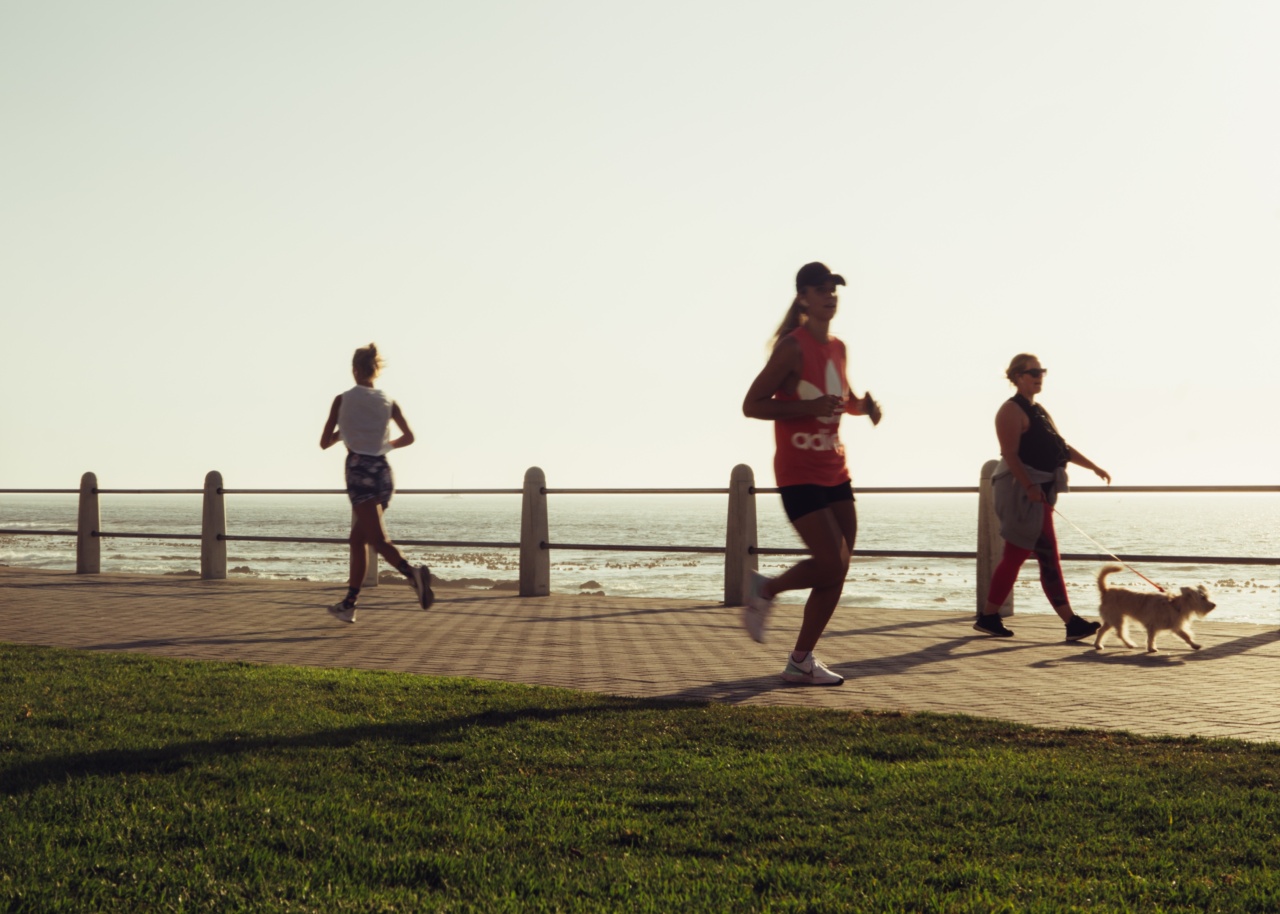One of the great joys of having a furry friend is being able to spend quality time with them outdoors. Whether it’s a leisurely walk or an invigorating run, exercising with your dog can be a wonderful bonding experience.
However, as a pet owner, you may wonder if it’s better to run or walk with your canine companion. In this article, we will explore the benefits and considerations of both activities to help you make an informed decision.
Benefits of Running with Your Dog
Running is an excellent form of exercise for both humans and dogs. Here are some benefits that running can provide for you and your furry friend:.
1. Enhanced Physical Fitness
Running is a high-impact activity that can significantly improve cardiovascular endurance, muscular strength, and overall fitness levels.
Regular running sessions can help your dog burn excess energy, maintain a healthy weight, and strengthen their muscles and bones. It can also contribute to weight loss and improved cardiovascular health for yourself.
2. Mental Stimulation
Dogs, especially active breeds, need mental stimulation along with physical exercise. Running stimulates their senses as they explore different environments, encounter new scents, and engage with their surroundings.
The excitement of running can also provide an outlet for their natural instinct to chase and hunt, making the activity mentally enriching for them. For you, sharing the experience of running with your dog can boost your mood, reduce stress, and enhance your mental well-being.
3. Bonding and Socialization
Running with your dog not only strengthens the physical bond you share but also enhances your emotional connection. It allows you both to spend quality time together, enjoying each other’s company in nature.
Moreover, running in public spaces can provide opportunities for your dog to socialize with other dogs and humans, helping them develop essential social skills and reducing behavioral issues associated with isolation.
4. Time Efficiency
Running generally covers more ground in less time compared to walking. If you have a busy schedule or limited time for exercise, running can be an efficient way to ensure both you and your dog get the physical activity you need.
It enables you to maximize the benefits of exercise for yourself while ensuring your dog gets enough exercise to stay healthy and happy.
Considerations for Running with Your Dog
While running with your dog offers numerous benefits, it’s essential to consider certain factors before lacing up your running shoes. Here are a few considerations:.
1. Age and Health
Young puppies, senior dogs, and certain breeds can have specific exercise restrictions. For example, large breeds with a predisposition to joint issues may be more prone to injuries from high-impact activities like running.
It’s crucial to consult with your veterinarian to determine if running is appropriate for your dog based on their age, health condition, and breed characteristics.
2. Fitness Level
Just like humans, dogs have different fitness levels. If your dog has been sedentary or isn’t used to regular exercise, it’s essential to start with shorter walks and gradually introduce running intervals.
This gradual approach allows their muscles, ligaments, and cardiovascular system to adapt to the increased activity levels, reducing the risk of strain or injury.
3. Size and Structure
Consider your dog’s size and structure before deciding to run with them. Smaller dogs may have more difficulty keeping up with a running pace and may tire quickly.
Additionally, dogs with short legs or long bodies, such as Dachshunds or Corgis, may be more susceptible to spinal issues and should avoid high-impact activities like running. Always prioritize your dog’s safety and well-being when making this decision.
Benefits of Walking with Your Dog
While running offers intensive exercise, walking has its own set of benefits that make it an appealing activity for both you and your dog. Let’s explore the advantages of walking:.
1. Low-Impact Exercise
Walking is a low-impact exercise that is gentle on joints and muscles, making it suitable for dogs of all ages and fitness levels.
It provides a safe and accessible option for dogs with health conditions or mobility issues, allowing them to stay active without putting excessive strain on their bodies. For you, walking can also serve as a low-intensity form of exercise that helps maintain fitness and promotes overall well-being.
2. Exploration and Mental Stimulation
Walking allows your dog to explore their surroundings more thoroughly than running. They have the opportunity to sniff, investigate, and interact with their environment at a slower pace.
This provides mental stimulation, allowing your dog to engage with their senses and satisfy their curiosity. Walking also gives you the chance to enjoy nature, appreciate your surroundings, and observe the world around you.
3. Training and Obedience
Walking is an excellent opportunity for training and practicing obedience skills with your dog. The slower pace allows for greater focus and concentration, making it easier to reinforce commands, practice leash manners, and improve overall obedience.
Regular walks can help reinforce positive behaviors, improve leash skills, and build a strong bond based on trust and communication.
4. Flexibility and Relaxation
Unlike running, walking allows for more flexibility and relaxation during your outdoor time with your dog. It encourages a slower pace and offers the opportunity to stop and enjoy your surroundings.
Walking can be a calming and soothing activity for both you and your dog, allowing you to unwind, destress, and enjoy each other’s presence without the rush of a faster-paced run.
Considerations for Walking with Your Dog
Although walking is generally a safe and enjoyable activity, there are still a few things to consider when walking with your furry companion:.
1. Exercise Intensity
While walking provides exercise, it may not provide the same level of cardiovascular benefits or calorie burn as running. If you or your dog have specific fitness goals or require higher levels of exercise, walking alone may not be sufficient.
However, it can still be a valuable component of a well-rounded exercise routine.
2. Time Commitment
Walking typically takes longer to cover a given distance compared to running. If you have limited time for exercise, you may need to adjust the duration of your walk to ensure you and your dog get the necessary physical activity.
Balancing your schedule with your dog’s exercise needs is crucial to ensure their well-being and satisfaction.
3. Environment and Distractions
When walking with your dog, it’s essential to be aware of your surroundings and potential distractions. Keeping your dog on a leash and in control helps ensure their safety and the safety of others.
Be mindful of other dogs, wildlife, or potential hazards during your walk, and always prioritize the well-being and behavior of your furry friend.
Making the Right Choice
Whether you opt for running or walking, the most important aspect is choosing an activity that suits both you and your dog’s needs and abilities. Remember to consider the following factors when making your decision:.
1. Your Dog’s Age and Health
Consult with your veterinarian to understand any limitations or health concerns that may impact your dog’s ability to run or walk for prolonged periods.
Their expert advice will help you make an informed decision that prioritizes your dog’s well-being.
2. Fitness Levels and Goals
Evaluate your own and your dog’s current fitness levels and goals. If you’re both new to exercise or have specific fitness goals in mind, a gradual approach with walking and later incorporating running intervals might be the best choice.
3. Energ y levels
Consider the energy levels of your dog’s breed or individual characteristics. High-energy breeds may benefit from the more intense exercise of running, while less active breeds or older dogs may be content with a leisurely walk.
4. Personal Preferences and Schedules
Assess your personal preferences, time availability, and schedule constraints. Running may be more time-efficient but requires a higher commitment, while walking offers flexibility and relaxation.
Choose an activity that aligns with your lifestyle to ensure consistency and sustainability.
Conclusion
Whether you choose to run or walk with your dog, both activities have their own merits and can contribute to a healthy and fulfilling routine for both of you.
Running offers enhanced physical fitness, mental stimulation, and bonding opportunities, while walking provides low-impact exercise, exploration, training possibilities, and relaxation. Ultimately, the choice between running and walking should be based on your dog’s individual needs, abilities, and limitations, as well as your personal preferences and goals.
Prioritizing your dog’s well-being and enjoyment will ensure a rewarding outdoor experience that strengthens your bond and keeps both of you healthy and happy.






























